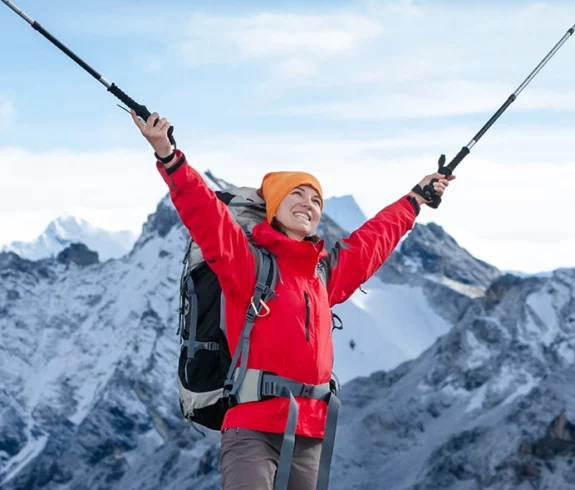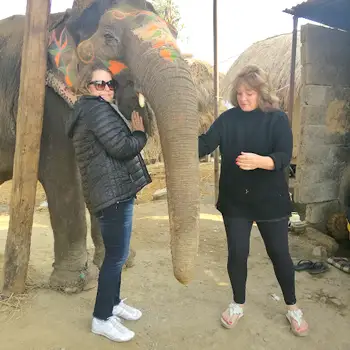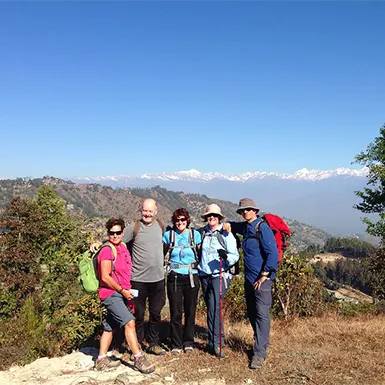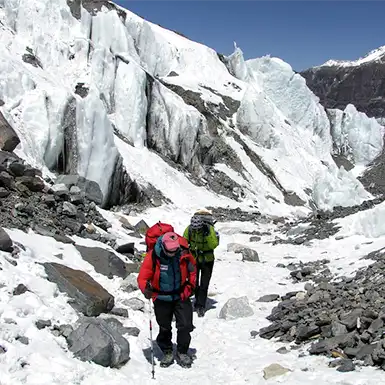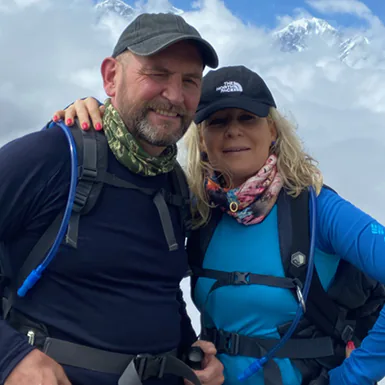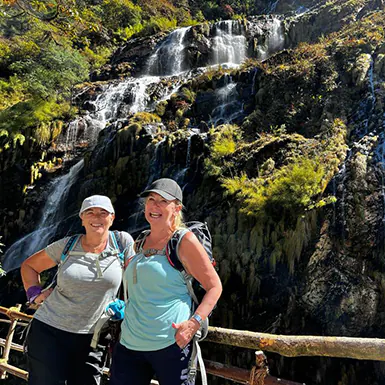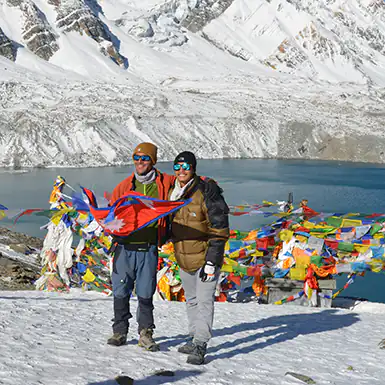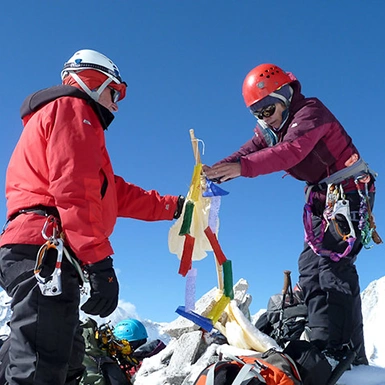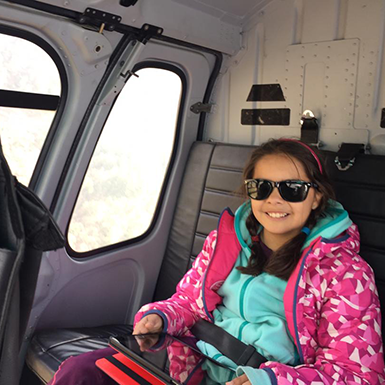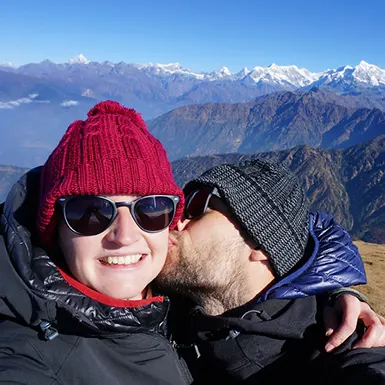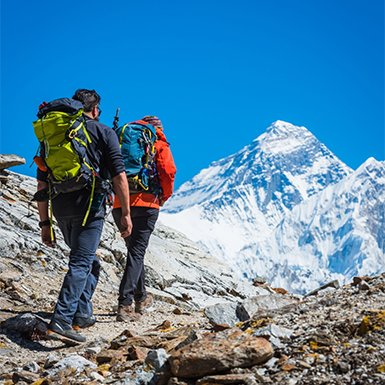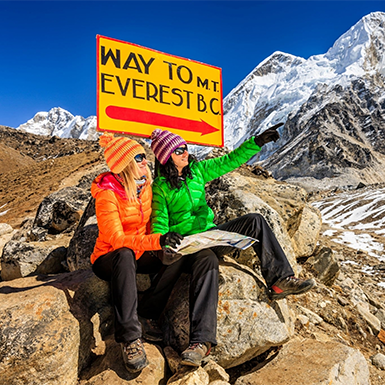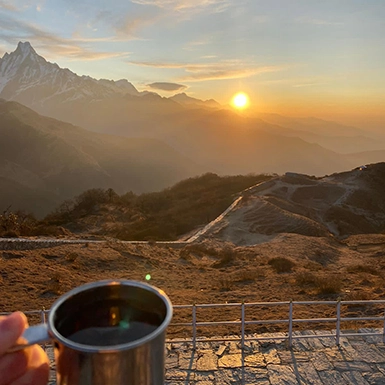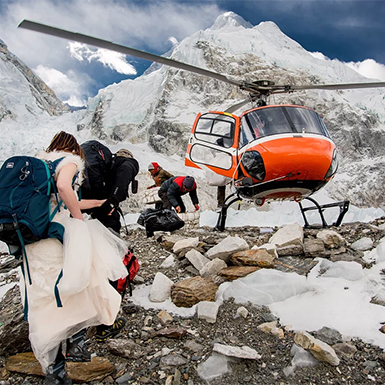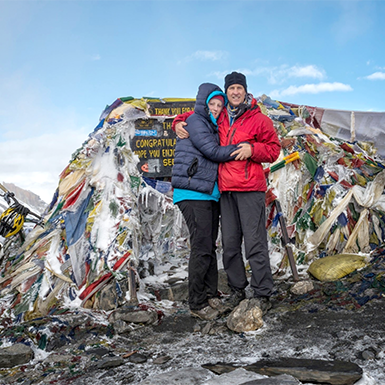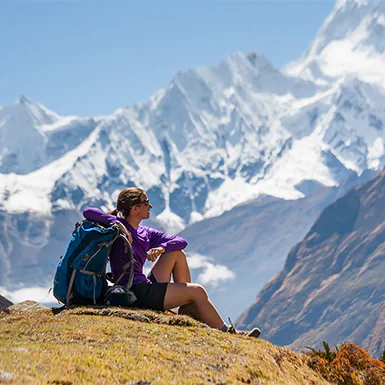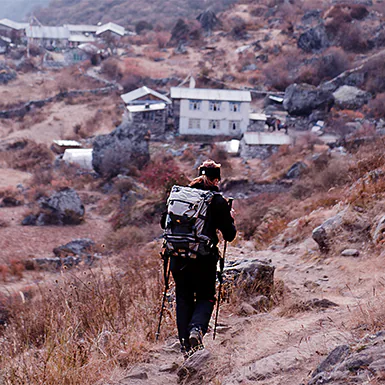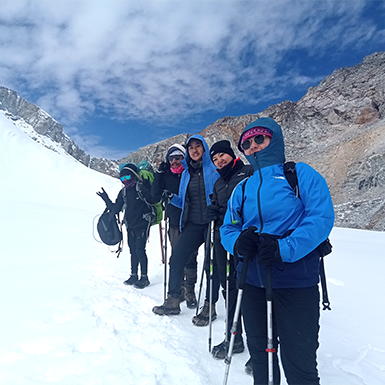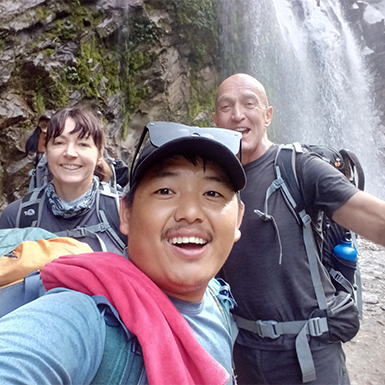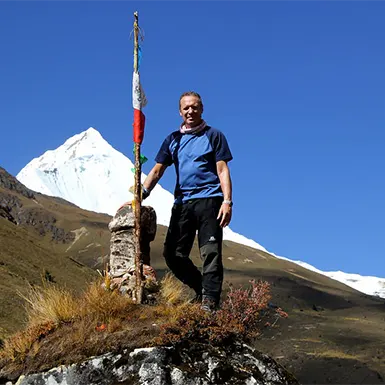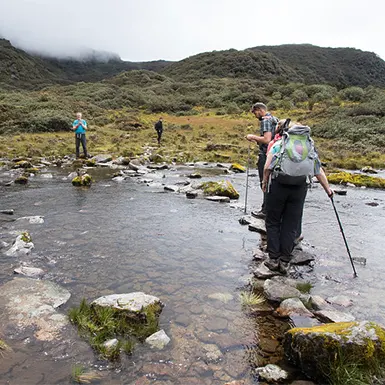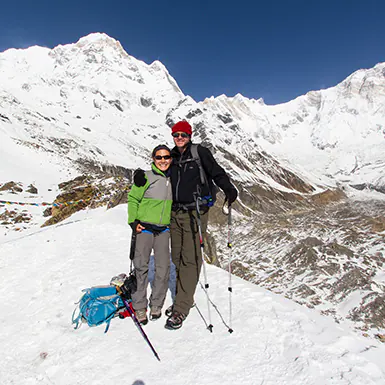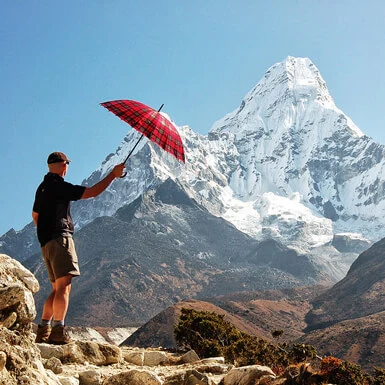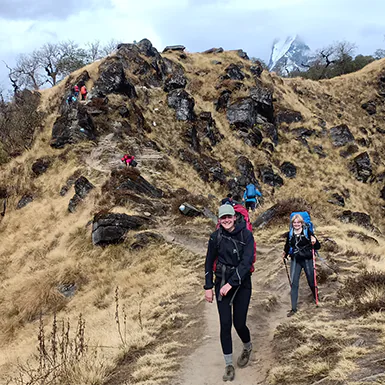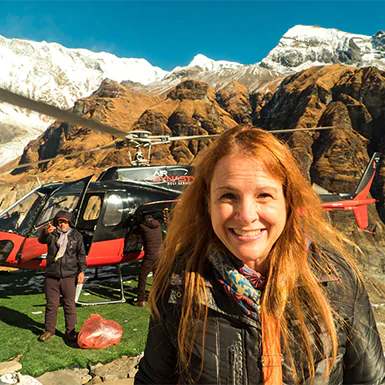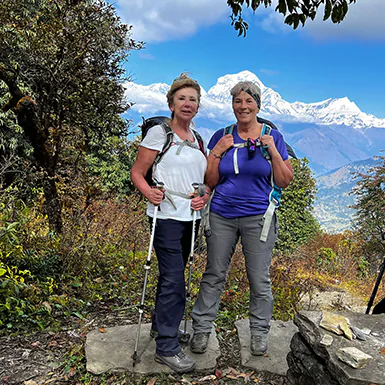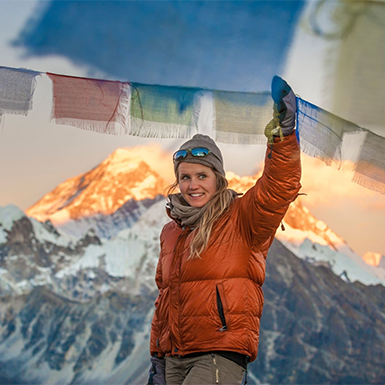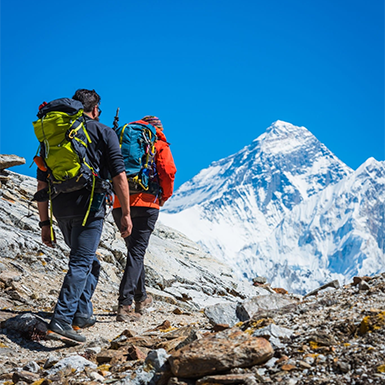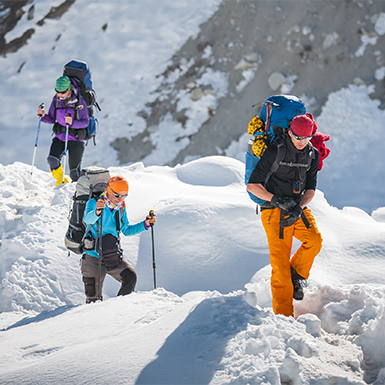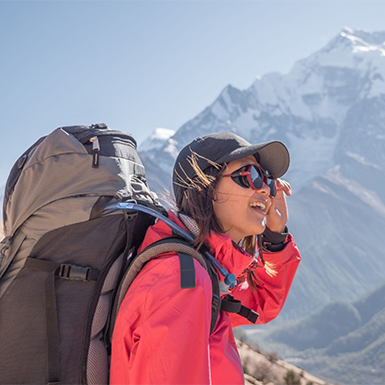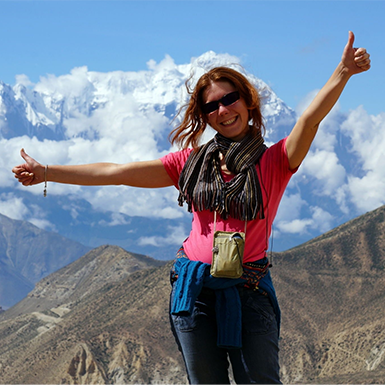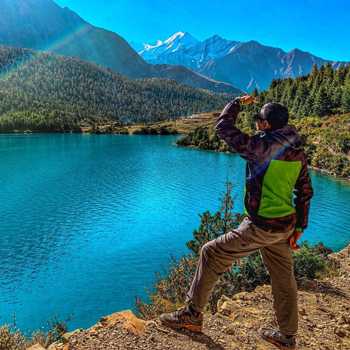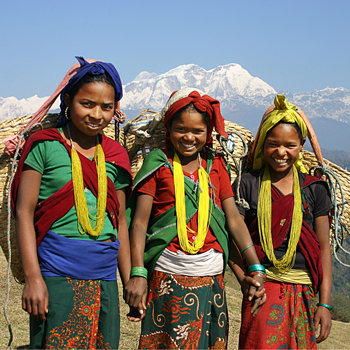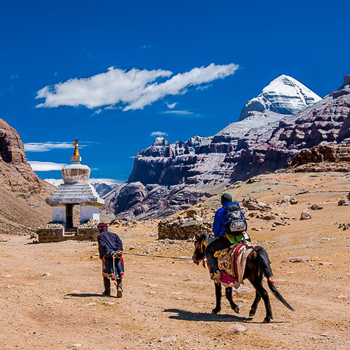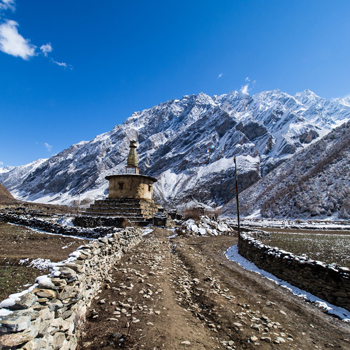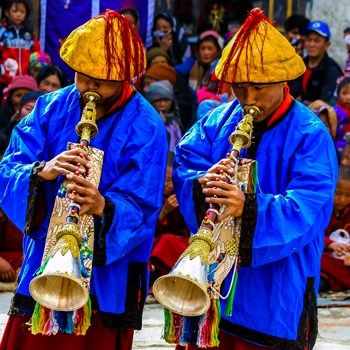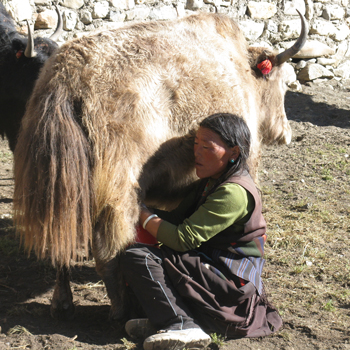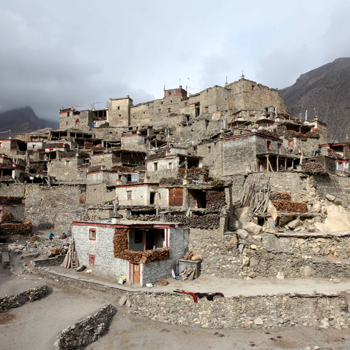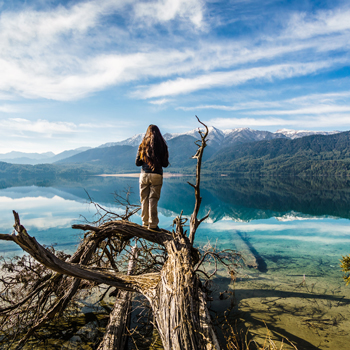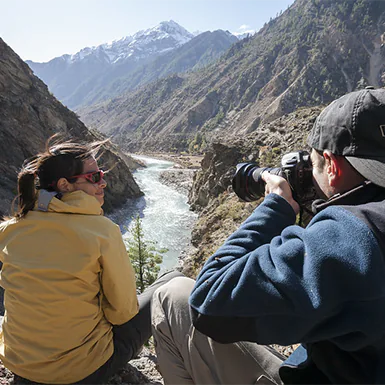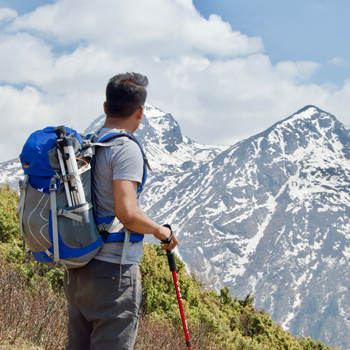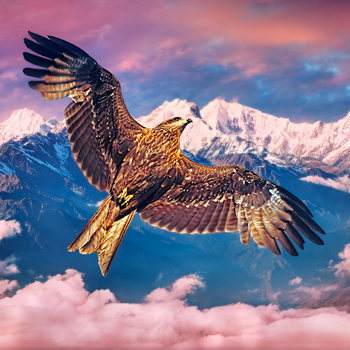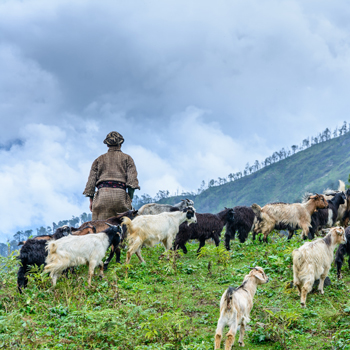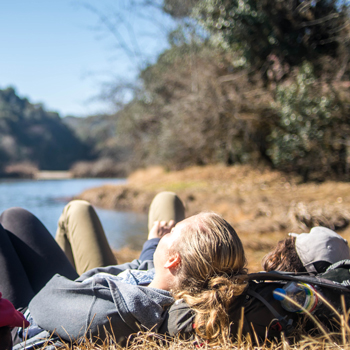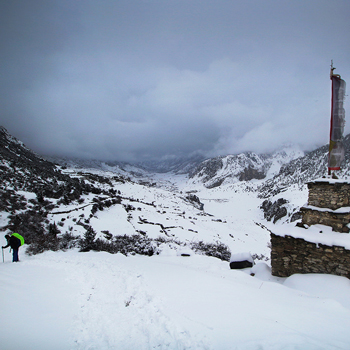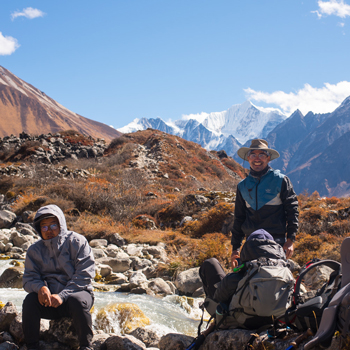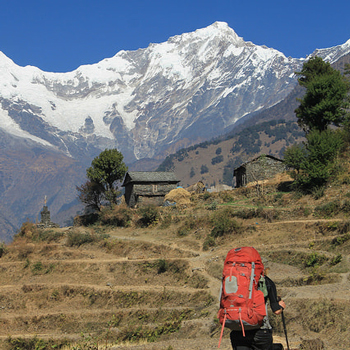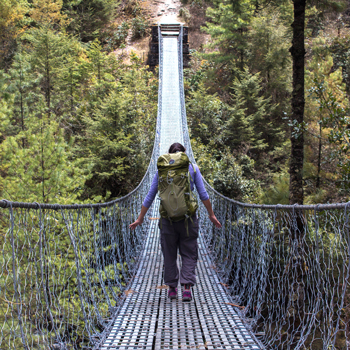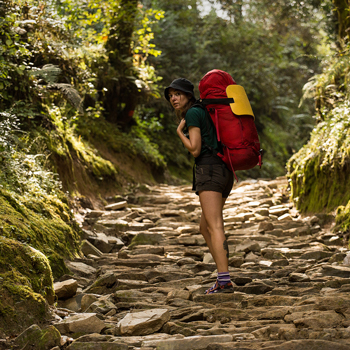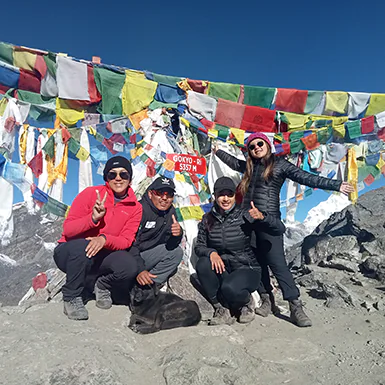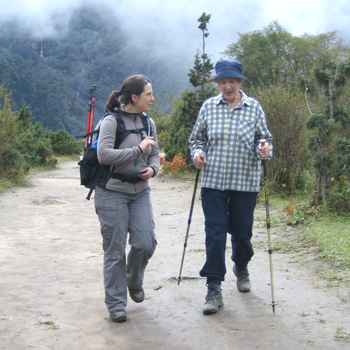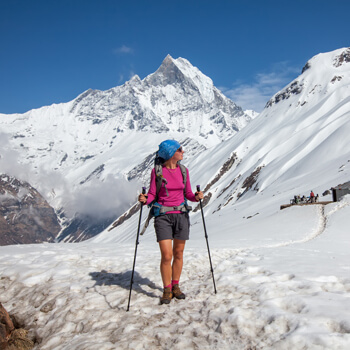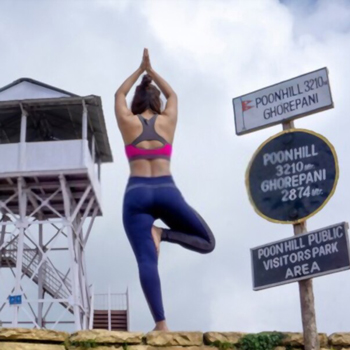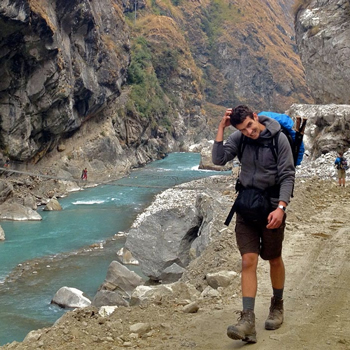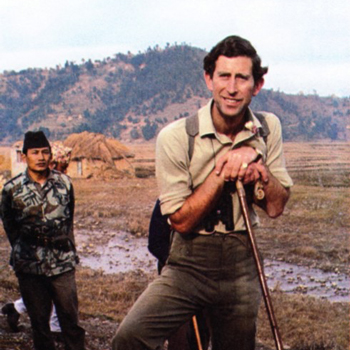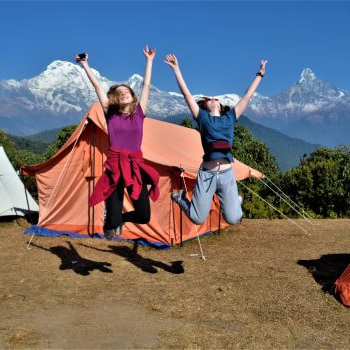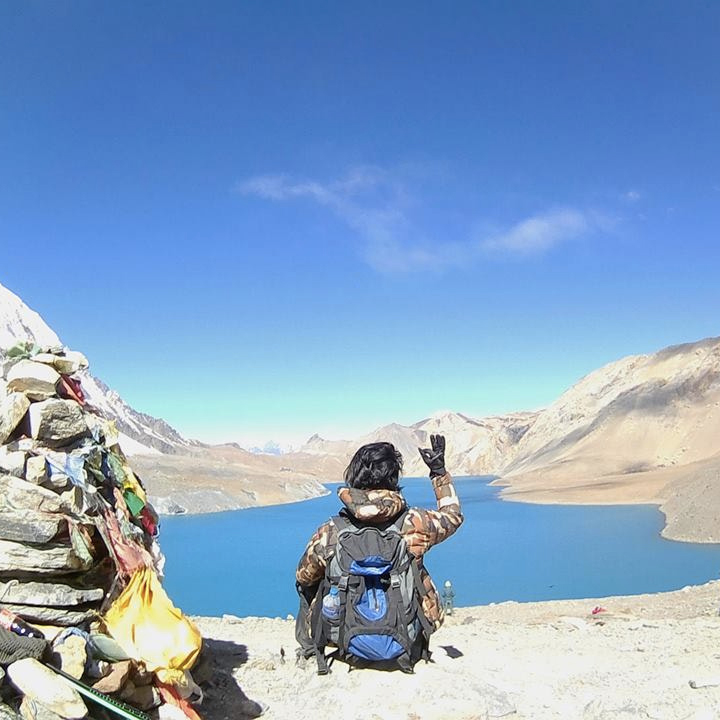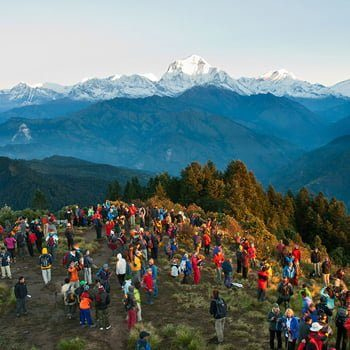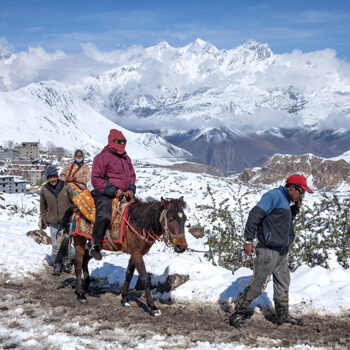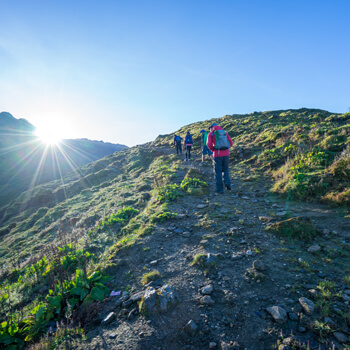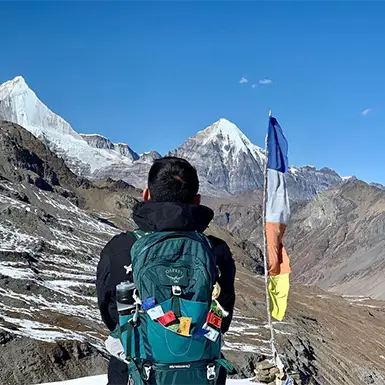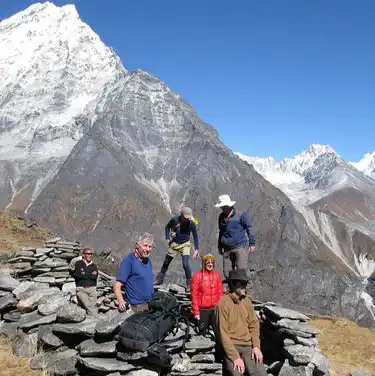Nepal Trekking Packages
Short Information on Nepal Trekking Packages
With the coronavirus pandemic blowing worldwide, being an adventurous company, we can relate to the frustration of people who cannot explore new areas. To overcome this pandemic, we are happy to announce that Peregrine Treks and Tours has resumed its travel business. We have developed beautiful “Nepal Trekking Packages” to reward our travelers with a gift for being so calm and careful during this COVID pandemic and helping the world stay inside safely.
Nepal Trekking Packages provide complete information to guide you through your new journey in our flamboyant country, Nepal. Trekking in Nepal allows one to explore a variety of Nepalese terrain, rich biodiversity, cultural significance, and pure, lustrous, snowy peaks, highlighting shiny glacial rivers along the trekking trails.
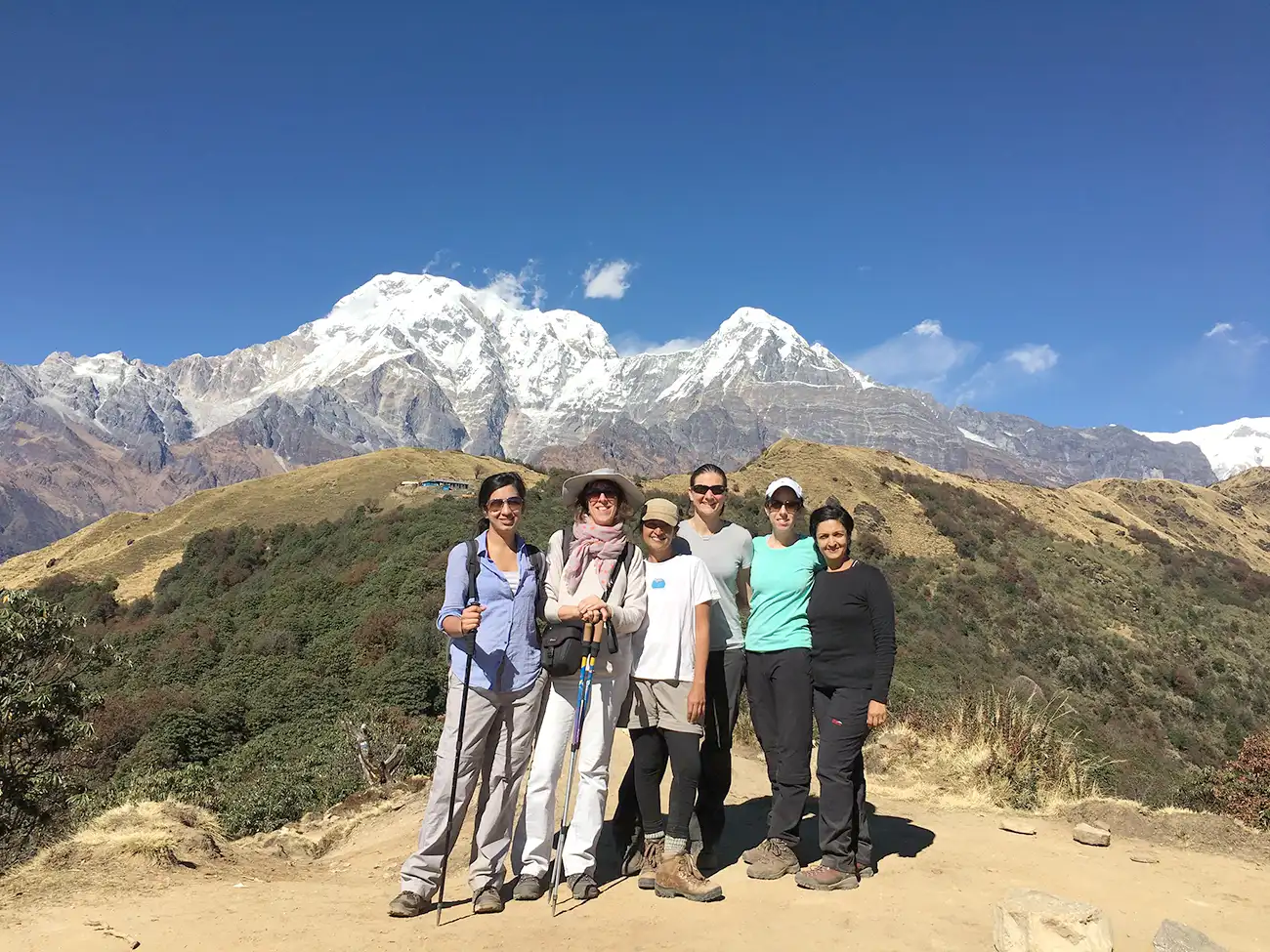
Why should you choose Nepal Trekking?
As Aesop once said, “Good things come in small packages.” Nepal is a small country yet very diverse in natural beauty and awe-inspiring mountains (it has the eight tallest mountains out of 10 world’s highest peaks), numerous glacial lakes, rivers, and streams along the trekking trails. Trekking in Nepal allows you to experience thrilling life adventures. It gives you satisfaction by walking in the lush forest of hills, passing by the rural indigenous settlements, and making yourself a part of it.
Once you set foot in our country, you will automatically feel the actual meaning of what Aesop wanted to say in his quote. Not that you would measure the exact size of Nepal, but you will be allured by the authentic aspects of Nepal, letting you not regret your choice and venturing into Nepal Trekking Packages.
Known for offering some of the best trekking in the world, Nepal offers routes for every adventurer. For those planning a trek to Nepal, our Nepal Trekking Packages provide a seamless adventure to the Himalayas. These packages blend adventure, culture, and comfort, making Peregrine Treks a top provider of Nepal travel packages.
Each package includes experienced local guides, comfortable lodges, and well-planned routes. We focus on clear communication and safety.
Peregrine Treks has guided hundreds of Nepal Trekking Packages, focusing on personalized service and safety.
Popular Nepal Trekking Routes
Our Nepal Trekking Packages include these famous routes:
Everest Base Camp
The famous Everest Base Camp Trek leads you to the foot of the world’s highest mountain. This trek includes a flight to Lukla and a gradual ascent through Sherpa villages. Enjoy views of Everest, Ama Dablam, Lhotse, and other peaks. (For details, see our Everest Base Camp Trek package.)
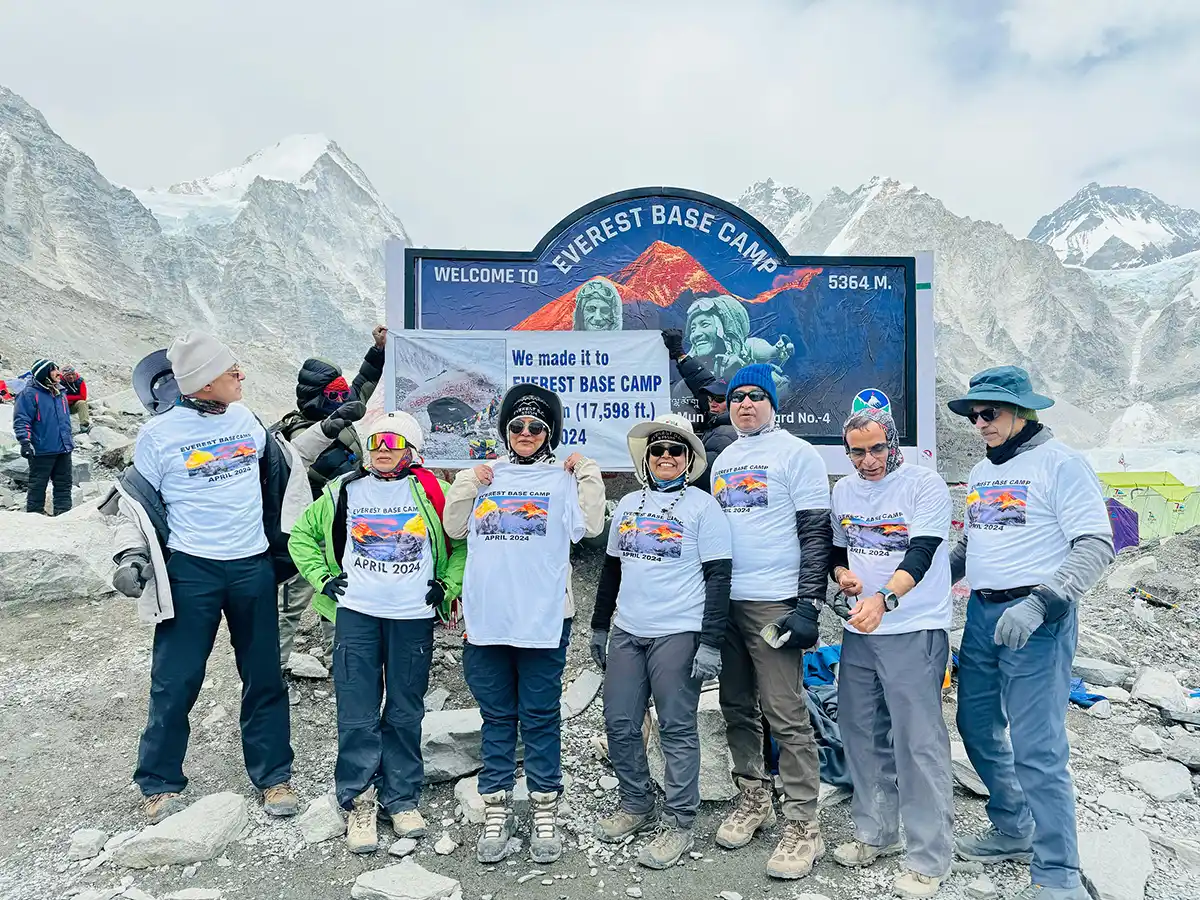
Annapurna Circuit
The Annapurna Circuit is a classic high-altitude trek in Nepal. It crosses Thorong La Pass (5,416 m) and loops around the Annapurna Massif. Trekkers walk through diverse landscapes and traditional villages. (See our Annapurna Circuit Trek package.)
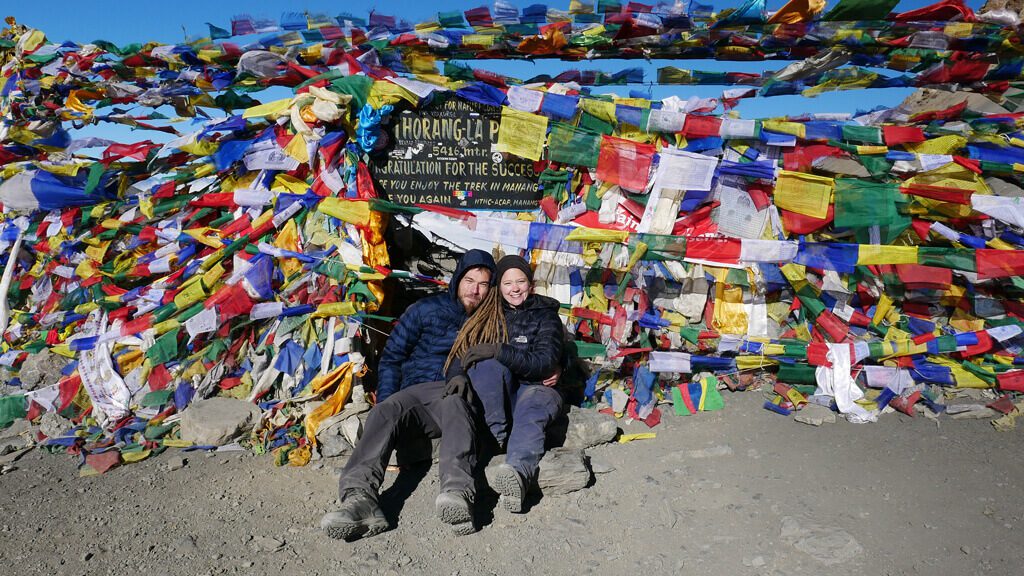
Langtang
The Langtang Valley trek is a scenic journey near Kathmandu. You trek to Kyanjin Gompa with views of Langtang Lirung (7,227 m). This route showcases rhododendron forests and Tamang culture. (Explore the Langtang Region Trek on our site.)
Ghorepani Poon Hill
Ghorepani Poon Hill is one of the best short treks in Nepal. You hike through forests and Gurung villages. An early morning climb to Poon Hill (3,210 m) offers panoramic sunrise views of the Annapurna and Dhaulagiri ranges. (Check out our Ghorepani Poon Hill Trekking package.)
Trek Difficulty Levels
We offer Nepal trekking packages for every skill level: easy, moderate, or strenuous.
Easy
Easy treks in Nepal suit beginners or families. These routes require only basic fitness and often involve walking for 3–5 hours daily. For example, the Ghorepani Poon Hill trek is gentle and provides stunning mountain views without extreme altitude.
Moderate
Moderate treks include longer days and higher altitudes. Annapurna Circuit and Langtang Valley are examples. These often involve 5–7 hour hiking days with regular acclimatization stops to adjust to the altitude.
Strenuous
Strenuous treks are physically challenging and reach very high altitudes. Everest Base Camp is an example. These treks require excellent fitness and strong mental readiness; our guides adjust the pace to keep you safe.
What’s Included and Excluded in Nepal Trekking Packages?
Each Nepal Trekking Package includes nearly everything you need for a smooth adventure.
- Included: All accommodation during the trek (tea houses or luxury lodges) and city hotels. All meals on trek (breakfast, lunch, dinner). Transportation (airport pickup, trailhead transfers, and domestic flights such as Kathmandu–Lukla). Licensed trekking or tour guide and porter (to carry your luggage), permits and national park fees, and government taxes.
- Excluded: International airfare, Nepal entry visa, travel insurance, personal equipment (sleeping bag, down jacket, etc.), personal expenses (snacks, hot drinks, wifi, souvenirs), and tips for guides and porters.
You will not face hidden charges for any Nepal tour or trek with us.
Sample Trekking Itineraries
Here are brief examples of our popular itineraries:
- Everest Base Camp Trek (14 days): Fly to Lukla via Namche Bazaar to Dingboche. Climb to Everest Base Camp (5,364 m) and Kala Patthar (5,545 m) for sunrise. Trek back via the same route to Lukla, then fly to Kathmandu.
- Annapurna Circuit Trek (15 days): Drive from Kathmandu to Besi Sahar and trek through mountain villages to the Manang Valley. Cross Thorong La Pass (5,416 m) and descend to the sacred Muktinath. Return via Jomsom to Pokhara and back to Kathmandu.
- Langtang Valley Trek (10 days): Drive to Syabrubensi, then trek through forests to Lama Hotel and Kyanjin Gompa. Optionally climb Tserko Ri (5,033 m) for close-up mountain views. Return via Lama Hotel to Syabrubensi and drive back to Kathmandu.
- Ghorepani Poon Hill Trek (7 days): Drive to Ulleri and trek to Ghorepani (2,860 m). Hike early next morning to Poon Hill (3,210 m) for spectacular sunrise views. Trek down via Ghandruk to Nayapul and drive to Pokhara.
Each itinerary uses our network of lodges and vehicles. Our experienced guides handle all logistics. All sample itineraries above are examples of our Nepal Trekking Packages and can be tailored to your pace and interests.
When is the best time for Nepal Trekking?
Like most places, Nepal experiences different seasons throughout the year. However, the weather can vary from place to place due to a small area’s vastly divergent geographical landscapes. The highest mountain is in the northern part of Nepal. The weather can be cold compared to the plains in the south, with temperatures rising to 45 degrees Celsius during the summer.
Of the four major seasons in Nepal, Winter, Spring, Summer, and Autumn, the most favorable time falls during Spring and Autumn. However, with experience guiding, we will try to simplify the possible pros and cons of all the seasons existing in Nepal.
Winter Season (December to February)
The weather can be rough during the winter, especially when you are on the Nepal Trekking trails at higher elevations. There might be winter casualties, like inaccessible passes due to heavy snowfall and extreme falls in temperature.
However, if you are an avid trekker willing to taste the flavor of the winter trekking trail, mid-February is the best time for you. The trail is less crowded, exposing snow-capped mountain peaks, freshly frozen lakes, and streams through trekking routes.
Spring Season (March to May)
A delightful season falls between March and May when the rhododendron forest blooms (Nepal’s national flower). The temperature (16-23°C) encourages trekkers to travel freely.
During the day, it is comparatively warmer and transparent, allowing you to see astounding panoramic mountain views. Trekkers can also see the snow melting in bright sunlight. Another benefit of Nepal trekking in Spring is the excellent weather for flying to and within the country.
On the contrary, hiking in places with lower altitudes can be hot and feel sweaty due to the humidity. Moreover, the afternoon clouds might bring light rainfall, creating a hassle on the hike.
Summer Season (June to August)
Nepal is landlocked and has a considerable precipitation rate; summer brings a heavy monsoon to Nepal. Calamities like floods, landslides, heavy traffic jams, and cancellation of domestic flights during this season, we do not recommend our trekkers choose this season for Nepal Trekking. Yet, Peregrine Trek and Tour can customize your trip and show you around better places to visit in Nepal according to the current season.
Autumn Season (September to November)
Last but not least, autumn is the peak season for Nepal trekking. The weather completely supports the trekkers, starting with a warm, pleasant day and ending with a breezy night to cool off their exhaustion. A bright day and stable weather give you a royal blue sky and beautiful mountain scenery.
Being the best season for Nepal Trekking, Autumn can still bring some cons. The route throughout the trekking trails can be the busiest and most heavily crowded. If you plan to trek solo this season, acquiring on-the-spot accommodation facilities might be challenging. Hence, you can enjoy the best time for Nepal Trekking without any inconvenience with Peregrine Treks and Tours.
What gear to pack for Nepal trekking?
Packing for travel is very tricky work. People often tend to overpack, thinking they might use all their gear during the journey. Packing for trekking also depends on the assistance of a porter.
Here in Peregrine, we provide one porter for every two clients. A porter’s maximum weight is 30 kg, giving you the perfect reason to pack your bags responsibly.
Here is a list of the essential gear you must pack for Nepal trekking.
Day Bag Pack
- Safety mask
- Hand sanitizers
- Water
- Snacks
- Rain gear
- First-aid kit
- Camera and its accessories
- Map
Hiking apparel
- Sweat-absorbent T-shirt
- Trekking pants
- Lightweight jacket
- Baseball cap
- Hiking boots
Accessories
- Water bottle/ filter bottle
- Water purification (capsules or liquid)
- Trekking poles
- Sunglasses
- Headlamp with extra batteries
- Master plug socket
- Reading stuff
- Pen and diary
Winter Clothing
- Wool thermals
- Sweater
- Fleece
- Winter pants and jacket
- Winter gloves, socks, and a hat
Individual supplies
- Toiletries
- Sunscreen
- Sanitizer
- Bio-degradable shampoo, bar soap, face and body wipes
- Lip balm
- Personal medications
Add on
- Extra copies of personal documents like passports, photos, etc.
- Extra pairs of batteries
- Duct tape
- Cash and a credit card
How to reach Nepal?
After three months of the COVID-19 lockdown, Nepal eased its lockdown on July 21st. The government has decided to open domestic and international flights on August 17th.
Once the airport opens, you can book the flight to Nepal according to your package details after arriving at Tribhuwan International Airport in Kathmandu. One of our representatives will take you to the terminal. You will then be transferred to your designated hotel and meet your trekking guide and team.
Requirements for entry
- Minimum of six months of passport validity at the time of entry
- One blank page in the passport (not the endorsement page) should be available for the Visa.
- A visa should be appropriate for travel, i.e., a tourist visa.
Travel Insurance
To our passionate global trotters, we highly recommend you have a travel insurance policy that covers medical problems, theft and loss, and adventure activities. You can inquire about better options for your insurance policy.
If you are trekking above 4000 meters, we suggest you take an insurance policy covering medical and emergency rehabilitation. In addition, you can select an emergency helicopter evacuation policy. Make sure your medical insurance covers the cost of doctors and hospitals instead of you having to pay bills on the spot and claim the insurance later on.
Trekkers’ safety is our main priority; however, casualties in the wilderness can never be predicted. Hence, we all must take safety measures beforehand.
Accommodation and food during Nepal trekking Packages
Our Nepal Trekking Packages are tea-house treks. We will book the lodge after confirmation of the trek. We will provide the best accommodation according to the services available at the destination.
You will be staying in one of the finest hotels in the city areas, like Kathmandu and Pokhara. After you log onto your trek, the accommodations will be slightly changed. As the altitude increases, the lodges and tea houses will be fewer. But you don’t have to worry about it, as we will book your stay where you can have basic facilities like a hot shower, a good bed, sanitized toilets, and proper electricity.
Regarding food, we have a famous proverb, “Dal Bhat power 24 hours,” where Dal is lentil sauce, and Bhat is rice. Dal Bhat is a traditional Nepalese dish that is very nutritious and gives you energy throughout the trek. Depending on availability, you can have various seasonal vegetables, greens, and non-vegetarian food items along with Dal Bhat.
In addition, you can order other delicacies like Momo, chow mein (noodles), fried rice, chapatis, etc., depending on the menu availability. Nepal is rich in food culture; depending on which trek you choose, you can enjoy the cultural food of Tamang, Sherpa, Magars, Newars, etc., on trial.
Peregrine Trek and Travel
Joining the adventure venture in 2002, Peregrine Treks and Tours has become “Pioneers in Adventure Tourism.” We believe we can help you discover treasure in your leisure time by vigorously planning your trekking and providing you with the services and satisfaction you desire and deserve.
Why choose us for Nepal Trekking Packages?
- Luxury Trekking Service: We book comfortable lodges and provide extra comforts (hot showers, heated dining rooms, etc.) when possible. Our treks include porter support, so you only need a day pack.
- Experienced Local Guides: Our guides know the mountains and local culture well. They speak English and Nepali and share insights from the region. They monitor your health and pace to ensure a safe climb.
- Personalized Itineraries: We fully customize each trek. You can adjust the pace, add rest days, or combine cultural tours.
- Safety First: We provide first-aid kits, oxygen, and emergency evacuation plans. We emphasize acclimatization and monitor your health closely. Our guides coordinate with base operations for any emergencies.
- Comprehensive Service: We manage all logistics in your Nepal Trekking Package, from flights and permits to accommodations and meals. This lets you relax and enjoy the trek without worrying about details.
- Responsible & Sustainable: We use local staff and lodges to support communities and follow Leave No Trace principles on every trek. We respect the Himalayan environment and culture in all we do.
- Proven Experience: We have guided hundreds of Nepal Trekking Packages safely and professionally. Thousands of adventurers trust us for unforgettable mountain experiences.
- Expert team: As a trek and tour management company established for 18 years, we have improved and strengthened our team. We look forward to providing the best services to our clients with a team of experienced, efficient, and hardworking personnel.
- Customized trekking itinerary: With our experience and your desire to trek, we try to provide a customized itinerary involving your ideas and enthusiasm. You can create the best trekking and expedition trips, and let us know. We will arrange the Nepal Trekking Packages as per your requirements.
- Well-trained local guides: Currently, our team includes one of the most experienced local guides for trekking. Our trekking crew members have extensive knowledge of trekking routes, good English, first-aid training, and can predict the weather. Most of our guides are from the Sherpa community. They are experienced and can provide better service during the trek/tour.
- Small groups: We operate in private groups and some small groups. Currently, we will be accepting private groups with fewer than five members.
- Transparency: At Peregrine, we aim to provide the best services, including the best guides and porters, good food and accommodation, and a heartfelt experience and satisfaction. We hope that our prices are reasonable enough to justify our services.
- Responsible travel: We are on the verge of improving ourselves to be responsible service providers and encourage our clients to be equally accountable for our environment. Everyone tries to minimize personal waste and not leave any carbon footprint on the trekking trails.
We utilize and contribute financial aid to communities along our trekking trails; in 2014, we set up “The Peregrine Foundation.” Every year, we donate a collective percentage of the company’s profit to aid the development of the local communities.
The time has come to relive the adventurous life and explore Nepal with complete safety measures, and for that, you can rely on Peregrine Treks and Tours. Feel free to inquire about our Nepal Trekking Packages and trek with us.
Trekking Group
Trekking in Nepal will be the most fantastic experience due to the stunning scenery and terrain. Most of the adventure is ideal for group trekking, with 10 to 11 trekkers in one group. There will be one guide for each of the six trekkers. On the other hand, there will be one porter to carry the backpacks and other gear for every two trekkers. Also, we can coordinate both single private treks and treks with your trekking group. During the private trip, you will have a single guide and porter, allowing you to experience every element of the adventure.
Water
Nepal is the world’s second-richest country in terms of water resources. Nevertheless, a particular water shortage will exist in the Alpine area throughout the dry season. However, up to this point, there has yet to be a water crisis, whether trekking or taking an incredible excursion across the Himalayas. Simply purchasing a water purification tablet can significantly assist you in cleaning both spring water and tap water. Additionally, you may get a bottle of water from the neighborhood cafes and small stores. After consuming the water, we advise you to put the plastic bottle in the garbage or carry it.
Altitude Acclimatization
Acclimatization to high altitudes is critical while trekking. Altitude sickness from 2000 meters to 3000 meters will always be a possibility. As a result, when trekking, you must give your body a break and eat frequently. The body must be hydrated, and the amount of oxygen in the body should rise with altitude. Altitude acclimatization is quite adequate in this regard. Similarly, to reduce the risk of altitude sickness, use an acetazolamide tablet to stabilize the body’s oxygen levels. The acclimatization varies depending on the itineraries, and our itineraries usually include an acclimatization day to allow our trekkers to relax and continue their trek without difficulty.
Trip Safety
Protection will always come first when you travel with us. Whatever the adventure, we won’t take any risks, regardless of how simple they may be. The entire crew professionally conducts itself while offering modest guidance. Furthermore, before the expedition, we will handle all your permit-related details and travel insurance. Also, our guests’ safety and security will always be at the top.
Moreover, we will only spend time keeping you out of difficulty at every turn of the expedition. Our guides are constantly prepared with medical supplies and other resources necessary for the trek. Additionally, our crew will connect well with the medical staff and the rescue team.
Preparing for the Challenge Terrain
Depending on the region, Nepal’s terrain formation varies. The Himalayas and the hilly region have extensive topography, which would require more effort to traverse than the plain terrain in the Terai. There will be phenomenal rivers, gorges, waterfalls, and valleys to cross. Trekking in Nepal will be more complex than you might have thought.
Most adventures will take you 4000 meters above the clouds and require you to navigate trials and tricky terrain. Before embarking on the journey, you must maintain your postural stability. It will be more beneficial to you if you are physically fit and have a solid knowledge of Nepal’s topographical conditions. Along the route, we’ll help you to the fullest by guiding you through the terrain and beautiful landscapes.
Weather
In Nepal, the weather is more pleasant and riskier. Altitude commonly affects Nepal’s weather patterns. Predicting the weather will be challenging at a high altitude, particularly in the summer. Other than this, passing through Nepal’s hilly terrain will be fine. The easiest way to ensure pleasant weather when trekking is to forecast the weather, or you may trek during the best seasons, like Spring and autumn. There won’t be any clouds or fogs to obscure the view throughout the Spring and autumn, when the weather will be perfect with little rain, making the trail suitable for trekking.
Fitness Level
We make the excursion enjoyable for our guests of all gender identities. The tour includes a wide range of activities that will completely surprise you. The body’s endurance is crucial to experiencing this excitement more thoroughly. Of course, you will feel exhausted throughout the expedition, but we don’t want you to quit in the middle. For this reason, you should start getting in shape with suitable activities before the four weeks of trekking. Porters will be available to carry your heavy backpacks during the trek, so this will be fine. We will also provide the necessary trekking equipment, such as sleeping bags and poles.
Moreover, workouts such as stretching, jogging, cycling, and climbing uphill will be necessary. Therefore, trekking across Nepal will be easy if you have the proper mental and physical stability. Proper fitness is critical to the expedition’s accomplishment.
Vaccinations
Vaccinations will be highly beneficial when traveling in Nepal. While climbing at higher altitudes, infections might become severe. Furthermore, infectious diseases might cause issues for the entire group if you travel in a group. As a result, it’s crucial to have COVID-19, hepatitis, and malaria vaccinations. Likewise, you may bring your doctor’s prescription and vaccination records to show your tour operator, enabling you to acquire the appropriate medication while traveling. Another thing to remember when traveling in Nepal is to bring medicine.
Passport and Visa
A visa is necessary for visitors from around the world to enter Nepal. India is the only country that doesn’t need a visa to enter Nepal. Consequently, obtaining a visa in Nepal will be more straightforward. You may quickly get the Visa at Tribhuvan International Airport when you arrive. You have to submit your passport and a passport-sized photo.
Furthermore, the visa cost will vary according to the time of year and duration of your stay in Nepal. You will obtain your Visa in a short amount of time. The Visa will also specify the number of days you want to stay in Nepal.
Environmental Care and Sustainable Tourism
Humankind has to protect the environment. Since nature provides us with a home, we should also take care of it. The Himalayan ecology enlightens us on the profundity of nature’s hidden side. Therefore, we must conserve the appropriate method. Our environmental policy is quite strict; we encourage our guides and staff to maintain the environment while trekking. Every aspect of our itinerary also demonstrates how we righteously manage our visitors, leaving both nature and guests smiling.
More than that, we take great care to preserve Nepal’s stunning ecology by conducting our tours and treks professionally. Similarly, our trekking organization carefully adheres to sustainable tourism, appropriately safeguarding both trekkers and the environment.
Transport
Transportation is the mainstay of all of our tours and treks. Utilizing modern cars that don’t affect the environment is our foremost priority. In addition, we will use a private vehicle for touring and airport drop-off and pickup services. Additionally, we will make our visitors feel comfortable during the lengthy bus ride by transporting them in a luxury bus with various amenities. Moreover, depending on the trip itinerary, the domestic airplane ticket will be part of the package and is free to use.
Trip Availability
Check our trip availability at any moment without hesitation. Make sure that you select the appropriate one for you. Get in touch with us to verify our availability at any moment. There may only be available departure dates as per your choice, and there may sometimes be large groups with no available space. In this situation, you can look into availability before making a decision. Managing permits, acceptance letters, tickets, and other documentation will be challenging. As a result, you are welcome to contact us to check on the availability of all the specifics of your travel so that we can advise you appropriately.
Frequently Asked Questions about Nepal Trekking Packages
Is a visa essential to travel to Nepal, and how much must I pay?
Undoubtedly, a visa is indispensable for traveling to Nepal. However, citizens of neighboring nations like India do not require a visa to enter Nepal. For foreigners from different countries, the Visa will last several days. You must fill out the form, submit a photo, and provide travel information to obtain the Visa. The cost of a visa varies according to the number of days. For example, USD 30 for 15 days, USD 50 for 30 days, and USD 125 for 90 days.
What is Peregrine Treks’ tipping policy? Is it mandatory?
Tipping tour guides and porters in the Himalayas is a beautiful way to show appreciation for their assistance. Guides and porters will be at your side throughout the trek and any adventurous tour. Nonetheless, tips are essential to compensate the guides and porters. Furthermore, they will offer you the most outstanding assistance and services on the trek. The porter will accept a gratuity of USD 125, while the guide will take about USD 130.
Is the internet readily available in Nepal?
In some ways, Nepal has typical internet access. You shouldn’t anticipate speedy internet, but it will always be there. Internet speeds in rural locations will be slightly slower than in urban ones. Similarly, there will be superior internet connections in the Alpine region’s teahouses, Kathmandu, and Pokhara’s lodges. Aside from that, you may utilize 3G and 4G network services, which you can obtain by purchasing a local SIM card for roughly USD 2.
Is there a mobile network in Nepal?
Of course, you may use your phone in Nepal. All you require is a local SIM card for your phone. Purchasing a SIM card in Nepal will be fine. You can easily buy a SIM card from any city, including Pokhara or Kathmandu, using your photo and USD 2. Additionally, a cell phone makes communicating with others and spreading information easier, making it permissible to use one in Nepal.
Can I get good toilets while trekking in Nepal?
The toilets in Nepal’s region will be OK with the Western style of sitting toilets. The teahouses and lodges will provide the best toilet and bathroom facilities. Furthermore, public Squat toilets will be shareable and accessible to the general public. Tissue paper, a short pipe shower, and an easy-to-use flushing mechanism will all be available to you to aid in cleaning.
Can I drink the water in Nepal?
In Nepal, water resources will be abundant. Throughout your travel, there won’t be a water crisis. However, some Alpine regions may need more drinkable, clean water. You may also bring a filtration tablet to make the water pure and drinkable. Similarly, you may carry bottles of drinking water that cost approximately USD 1 for two bottles.
Are credit cards accepted widely in Nepal?
Credit cards, including Visa, Mastercard, and many other bank cards, are unquestionably accepted in Nepal. Similarly, not all ATMs might accept all cards, but you can check with banks and other financial institutions. The central banks in Kathmandu, Pokhara, and many other cities in Nepal are also places where you may exchange cash.
What is ATM access like in Nepal?
Throughout Nepal, ATMs will be accessible. However, they are abundant in plain areas like the Terai region and developed urban Alpine regions. Similarly, using ATMs is straightforward and trouble-free. Furthermore, locating ATMs and banks will be challenging if you want to trek to Nepal’s remote and Himalayan regions. As a result, you may use the ATMs in Pokhara and Kathmandu, which take all major cards from across the world.
Is travel insurance mandatory for trekking with Peregrine?
Travel insurance is essential when visiting Nepal. Traveling in Nepal may be challenging due to the country’s complicated geography and unpredictable climate. The tranquil environment of Nepal could deliver something unexpected. Similarly, while trekking at an unusual time, a rescue effort can be essential at some point.
Travel insurance will enable you to maintain monetary stability throughout the rescue operation. You may obtain travel insurance from Pokhara or Kathmandu by summarizing your itinerary, providing your passport, and submitting a photograph. Including helicopter rescue beyond 5000m altitude in the travel insurance process would be more helpful to you.
Is Nepal accessible for travelers with disabilities?
Nepal finds it challenging to accept those with disabilities. Nepal’s scenery, geography, weather, and topographical conditions challenge individuals worldwide. However, several such facilities will aid disabled persons in various ways. There are also helicopter packages, jeep trips, and other options for these people. More than this, the hotel accommodations will also deliver quality services for people with disabilities.
Is Nepal an LGBTQI-friendly destination?
Nepal is a peaceful nation where people live together in peace and devotion. No one here will discriminate based on sexual orientation. Nepal encourages LGBTQI individuals to experience its adventurous aspects alongside other trekkers. During your stay in Nepal, you may potentially encounter other LGBTQ individuals. Because of this, regardless of what sexuality you identify with, you may enjoy the breathtaking Himalayan trek in Nepal.
